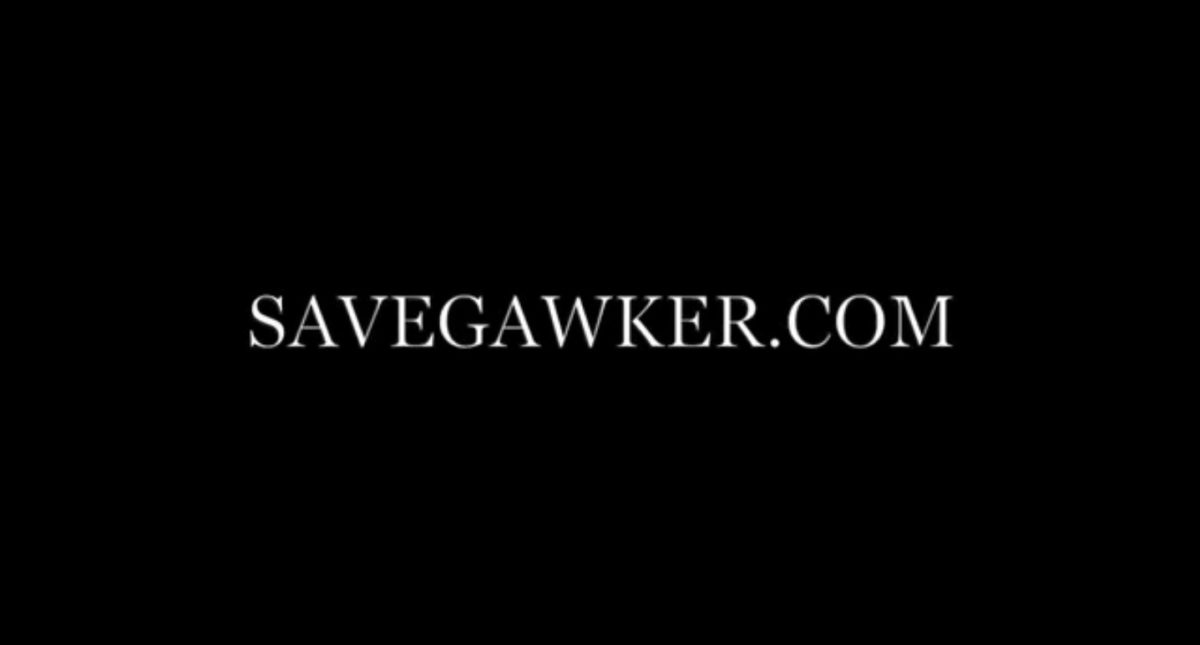A group of semi-anonymous former executives, editors and writers of Gawker Media launched a Kickstarter campaign this week to raise money to bring the site back.
The campaign is called Save Gawker.com and aims to raise $500,000 to buy the Gawker.com domain and archives and then to rebuild an editorial staff under the Gawker banner. So far, more than 900 backers have donated nearly $60,000 to the campaign, which will last for 26 more days.
The official entity raising the money is a new nonprofit called the Gawker Foundation. It plans to run the site without ads or a paywall, supported by readers and larger donors.
https://twitter.com/jktrotter/status/940585293543034880
“As far as membership goes, it was a tried and true model for publishing for over a century, and it was only in the digital era did we assume that content had to be free to be viable,” explained one of the principal organizers of Save Gawker.com, James Del, in a DM to Technical.ly. Del was an executive at Gawker Media from 2008–2015 and is now the publisher of the science and tech publication Futurism. “If you operate a lean publication that only aspires to fund editorial and not make a profit, you can get by on a small but dedicated subscriber base. It isn’t the best business model from a traditional capitalist sense, but it is a proven model for funding culturally important work.”
Gawker was founded in 2003 by Nick Denton and ceased operations in 2016, following a prolonged legal case against it involving the publication of a sex tape of wrestler Hulk Hogan. The lawsuit was financed by tech titan Peter Thiel, who had a longstanding grudge with the publication, and it resulted in a $31 million settlement that sent the company into bankruptcy. The company was eventually sold to Univision out of bankruptcy, which retired the Gawker.com site but maintained the other sites.
During the more than a decade of publishing, Gawker and its verticals, which included Jezebel, Gizmodo and Deadspin, developed a distinctive editorial voice that came to more or less define a generation of digital media. It’s hard to describe it, though you know it when you read it. The voice is punchy, clever and unafraid. It won Gawker many fans and readership ballooned.
But can those old fans turn into customers?
The $500,000 goal is just to buy the domain name Gawker.com. Additional funding for an editorial operation would have to come after that. According to the Kickstarter campaign, “If we don’t raise enough money to buy the site, we will preserve the archive and launch a new publication under a different name. We’re bringing this back whether we have the Gawker URL or not.”
Most of the people behind the project remain anonymous, as they currently work at other media publications. But one of the public-facing leaders is Elizabeth Spiers, the founding editor of Gawker, former editor-in-chief of the New York Observer, and founder of the forthcoming media company The Insurrection.
Membership models seem to be popping up all over the place in media, and we wondered why she thought this might work now after decades in which it was assumed people wouldn’t pay for content. (Full disclosure: We at Technical.ly recently received a small grant to launch a membership program.) In fact, Spiers explained, many have done just that, but more on the nonprofit side.
“I imagine we’d also have to solicit donors regularly to the organization to fund growth,” she wrote in an email to Technical.ly. “And that model isn’t new. It’s how NPR is funded. And most advocacy pubs are funded this way—Mother Jones, The Nation, etc.”
Spiers also had thoughts on what doesn’t work well for a membership model.
“They assume they build membership instantly instead of incrementally and don’t model correctly as a result. They don’t build marketing and growth costs to acquire new members into their models. The memberships themselves don’t offer enough,” she explained. “They view memberships as de facto recurring donations where the value to the user is the joy of writing the check and don’t cultivate the communities as a result.”
Before you go...
Please consider supporting Technical.ly to keep our independent journalism strong. Unlike most business-focused media outlets, we don’t have a paywall. Instead, we count on your personal and organizational support.
Join our growing Slack community
Join 5,000 tech professionals and entrepreneurs in our community Slack today!
